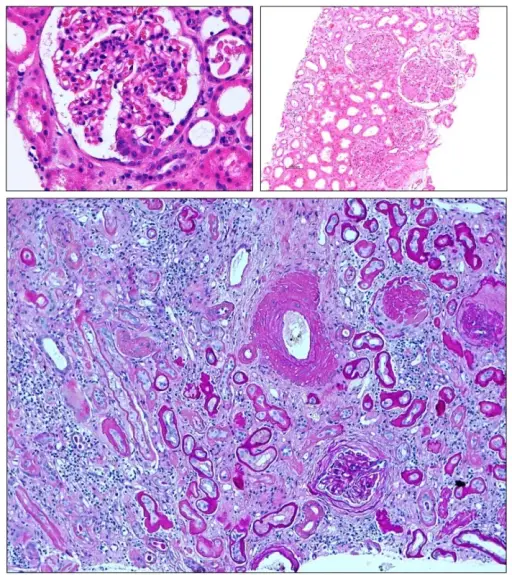
Insufficient epithelial repair results in mesenchymal repair. Loss of glomerular epithelial cells (podocytes) cannot be easily repaired in adults leading to focal-segmental glomerulosclerosis (upper left). Global glomerulosclerosis (upper right) results from the progression of focal-segmental lesions or as a consequence of diffuse and persistent disease mechanisms such as diabetes, hypertension, or immune complex glomerulonephritis. Here also, mesangial cells contribute to sclerosis by excess production of the mesangial matrix. In chronic kidney disease insufficient tubular regeneration results in tubular atrophy, which is usually associated with concomitant tubulointerstitial fibrosis. These complex lesions make it difficult to appreciate the individual contributing danger response programs. Magnification 100×–400×. Danger control programs cause tissue injury and remodeling: Hagemann JH, Haegele H, Müller S, Anders HJ - International journal of molecular sciences (2013). Not altered. CC.
Tubular and interstitial diseases are the disease of the kidney that mostly affects the renal tubules and the renal interstitium respectively.
Examples of tubular and interstitial diseases include:
- Acute drug-induced interstitial nephritis
- Bile cast nephropathy
- Hypercalcemia induced tubulointerstitial disease
- Light chain cast nephropathy
- Nephrocalcinosis
- Urate nephropathy



